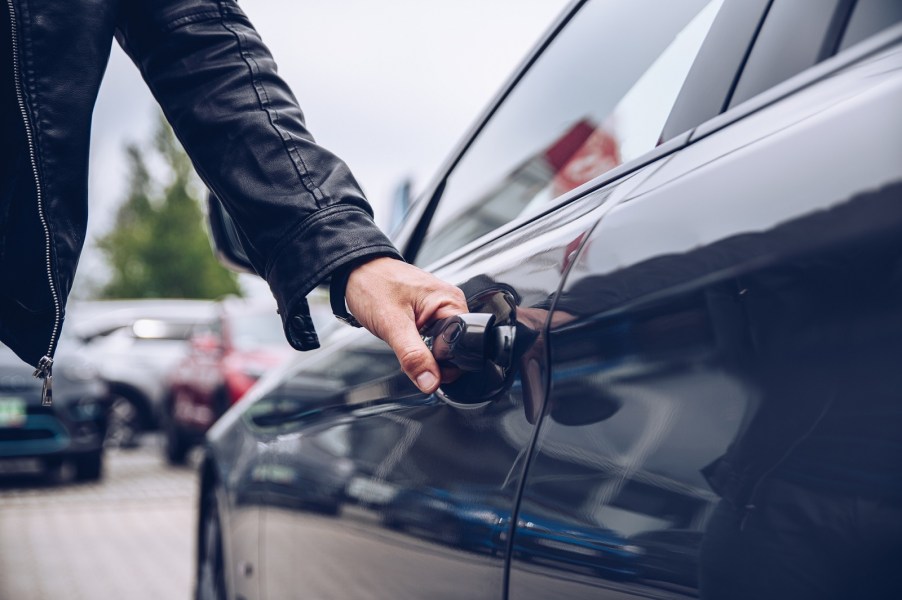
Thieves are using the ‘Game Boy’ method to steal more cars than ever before
Over time, thieves have employed various methods to break into cars and haul them off. One of the more rare strategies was a Nintendo Game Boy look-alike. Before now, these emulators were far too expensive and restricted to luxury models. However, updates have opened their accessibility to more common models. Interestingly, this includes EVs, like the Hyundai Ioniq 5 and the Kia EV6. One Honda owner claims their 2022 Accord was stolen using the “Game Boy” method. Here’s how they work and what you can do to protect your car from “Game Boy” theft.
You’re probably well aware of the “Kia Boyz” and the gaps in Kia and Hyundai CAN security systems. There’s also the highly publicized ability of robbers to redirect key fob signals sitting near doors and windows using a laptop. The “Game Boy” is a key emulator that doesn’t require a laptop or an actual key fob in close range. It’s a handheld device that emulates the vehicle’s original key. In other words, the device mimics a fully functioning key independent of other existing keys. In seconds, a thief can unlock a car, hop in, start it, and drive away. It’s as if they were carrying an OEM fob.
The “Game Boy” emulator wakes up the car’s key recognition process when the thief touches the door handle. The device quickly crawls for and delivers the security PIN that matches the car. The vehicle unlocks, allowing the thief to start it and drive away without issue.
It doesn’t stop there. Because the device acts like an OEM key fob, the car can’t tell the difference between the owner and the thief. As such, the thief can also disable GPS and all remote functions.
While several sources report that the “Game Boy” costs between $16,000 and $30,000, the price doesn’t seem to be slowing this method down. In fact, due to the breadth of vehicles it can target, folks are reporting emulator use in more instances than ever.
Since the emulator doesn’t look for CAN system gaps, like in Hyundais and Kias, it can unlock and start a wider range of cars.
Some automakers have systems that require a specific PIN based on the vehicle identification number (VIN). That doesn’t necessarily stop thieves with the “Game Boy.” The VIN is stamped on a tag inside the windshield, visible to anyone standing outside the car.
Tesla owners can choose and set their own PIN-to-drive code. This seems to be a viable deterrent to the device – as long as this authentication step is activated.
Many folks put their key fobs in metal cans, boxes, or even potato chip bags to block the key’s signal from hacker interception. Unfortunately, hiding your car keys won’t protect against “Game Boy” theft. Until automakers or other third parties come up with a solution to the key emulator, you might consider more manual theft deterrents, like a steering wheel lock. You can also install a non-OEM tracker somewhere discreet. This way, you aren’t relying on a system a thief will likely disable once they’re inside your car.



